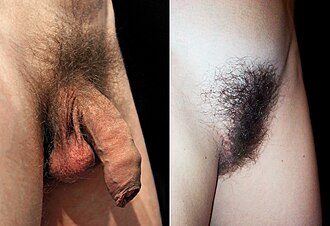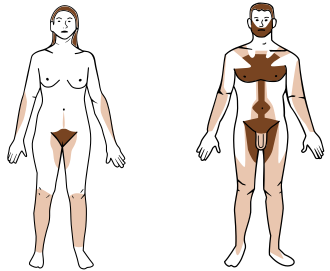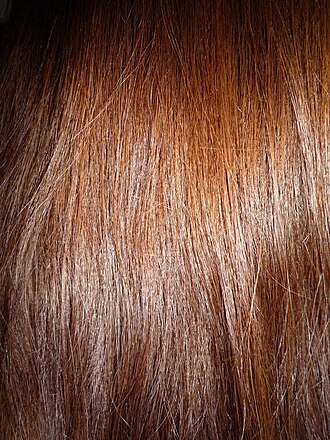Hair Last Name Origin, History, and Meaning
Where did the surname Hair come from? What does the surname Hair mean? Discover the history and meaning of the last name Hair and family migration on YourRoots Map.
Surname Hair Origin: What does the last name Hair mean?
The surname Hair originated in Scotland during the early 17th century, as per YourRoots data. It later spread to countries like the United States, England, and Ireland. The surname's history shows significant growth in the United States during the 18th and 19th centuries, with a global presence in countries like Canada, Australia, New Zealand, Germany, France, and South Africa by the 20th century.
Just like the Smith surname, Hair has a rich history and global reach. It is linked to Scotland in the 17th century and has since expanded to various countries. The YourRoots data provides insights into the widespread presence of the Hair surname, reflecting a diverse heritage and continued evolution across different regions and cultures.
Hair Last Name History: Where did the last name Hair come from?
Origin of Hair Surname: Where does the last name Hair originate from?
According to YourRoots data, the surname Hair first appeared in records from Scotland during the early 17th century. Please note that this reflects only YourRoots data for the exact Hair spelling and does not include other record sources or surname variations.
History of the Last Name Hair: What does the Hair surname history look like in the early days?
The Hair surname remained closely associated with Scotland in the 17th century, then saw significant growth in the United States during the 18th and 19th centuries. YourRoots data also shows Hair family records in countries like England and Ireland, indicating global spread over the centuries.
Global Spread: Where can we find the Hair surname today?
By the 20th century, the volume of records with the Hair surname grew significantly in the United States. The Hair surname remains prominent in countries like Canada, Australia, and New Zealand. It appears in many countries globally, including Germany, France, and South Africa.
Explore Hair last name heritage and Hair surname origin based on YourRoots Map data
 VIEW THE ORIGIN OF SURNAME HAIR
VIEW THE ORIGIN OF SURNAME HAIRFamous People With Hair Surame?

Red hair
Red hair, also known as ginger hair, is a unique hair color associated with individuals of Northern or Northwestern European ancestry. It is characterized by high levels of red pigment and is often linked to fair skin, light eyes, and freckles. Famous historical figures and cultural icons with red hair include Queen Elizabeth I of England, King David of Israel, and the fictional character Anne Shirley from "Anne of Green Gables." The prevalence of red hair varies across different regions, with Scotland having the highest percentage of redheads per capita. Red hair can also be found in Eastern Europe, Southern Europe, North Africa, the Mediterranean, and even in some Asian populations.

Pubic hair
Pubic hair is a natural and common body hair found in the genital area and pubic region of humans. It develops during puberty in response to hormonal changes, with variations in color, texture, and patterns among individuals. While some cultures view pubic hair as erotic, others prefer to remove or style it for aesthetic reasons. Desmond Morris suggests that pubic hair may act as a scent trap, while also providing cushioning during intercourse. Despite its controversial nature in some societies, pubic hair remains a distinctive secondary sex characteristic for both men and women.

Body hair
Body hair, also known as androgenic hair, refers to the terminal hair that develops on the human body during and after puberty. It differs from head hair and vellus hair, being darker and thicker. Growth of body hair is influenced by androgens and varies in density from person to person. Areas like the chest, abdomen, arms, feet, and legs can experience increased hair growth during puberty. While cultural practices may influence hair removal, body hair serves as a secondary sexual characteristic in both males and females. Understanding the distribution and growth patterns of body hair can provide insight into human development and diversity.

Brown hair
Brown hair (Brunette) was a common trait among famous people and historical figures. It is the second-most common human hair color, after black hair. From actors like Audrey Hepburn to historical figures like Queen Victoria, brown hair has been a defining characteristic for many individuals throughout history. Whether on the big screen or in the pages of history books, brunettes have left their mark on the world with their talent, leadership, and contributions.

Greying of hair
Greying of hair (birthdate – deathdate) was a natural process where hair loses pigmentation, turning grey or white as people age. It typically begins in the 20s for men and 30s for women, with genetics playing a significant role. Factors like stress, UV damage, and medical conditions can also contribute to premature greying. While grey hair is often seen as a sign of aging, it can also be influenced by environmental and genetic factors. Understanding the causes and effects of greying can help individuals embrace their natural hair color changes with grace and confidence.
All images displayed on this page are sourced from Wikipedia or Wikimedia Commons.We use these images under their respective Creative Commons or public domain licenses. Wherever applicable, author attributions and license information are provided. If you believe an image is used incorrectly or outside its license terms, please contact us so that we can review and correct the issue.




.png)